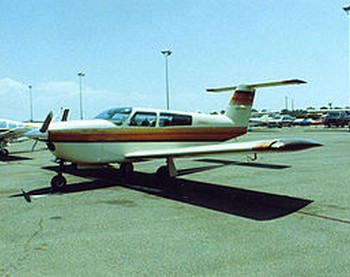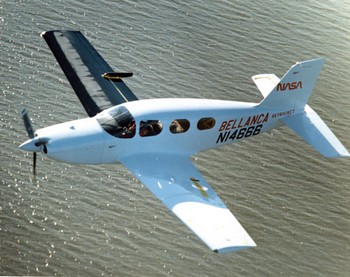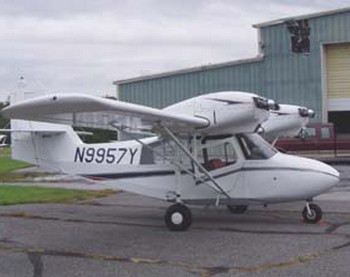Some Rare Bellancas
Guisseppe Bellanca was prolific in his designs, most of which made it past the drawing board to actual flying prototypes or production models. A full list of his designs can be viewed on Wikipedia. However, many of these no longer have any flying aircraft, and many no longer exist at all. However, there are 3 models which bear a special mention.

Bellanca T250 Aries
The Bellanca T-250 Aries was a light airplane built in the United States in the early 1970s, which achieved only limited production. Designed by Marvin Greenwood while Anderson-Greenwood owned the Bellanca name, it was a conventional low-wing monoplane with a retractable tricycle undercarriage and a high T-tail. Federal Aviation Administration type certification was obtained on 28 July 1976. Only 4 of these aircraft were ever built.

Bellanca 19-25 Skyrocket
The Bellanca 19-25 Skyrocket II was a prototype light airplane built in the United States in the 1970s. Despite its advanced design and exceptionally good performance, it never achieved certification or entered production.
The Skyrocket II was a six-seat, low-wing cantilever monoplane of conventional layout with retractable tricycle landing gear. It was made of composite materials, an advanced feature for its time, and test flying proved it to be fast. In 1975, within months of its first flight, the prototype claimed five world airspeed records for piston aircraft in its class. Three still stand in 2022:
Class C-1c (takeoff weight 1000 to 1750 kg): average 296 miles/hour on a 500-km circuit[2]
Class C-1d (weight 1750 to 3000 kg): average 326 mph on a 500-km circuit[3] and 314 mph on a 1000-km circuit[4]
The aircraft attracted the attention of NASA, which conducted an aerodynamic analysis of the design, investigating natural laminar flow as a factor of its high performance.

Bellanca 402 Lancer
The Champion 402 Lancer is a twin-engine trainer produced by Champion Aircraft, a high-wing monoplane based on the tricycle gear Champion 7FC Tri-Traveler, but with wing-mounted Continental O-200-A engines. The Lancer first flew in 1961 and production began in 1963. The Lancer seats two in a tandem configuration with dual flight controls; the pilot in command or student pilot normally occupies the front seat.
The prototype Lancer underwent development between 1961 and the start of production in 1963. The changes included relocating the engine nacelles to their final position above the wing, strengthening the wings to accommodate the engines, and redesigning the empennage to provide for twin-engine control requirements. The Federal Aviation Administration type certificate was approved on 7 March 1963.

